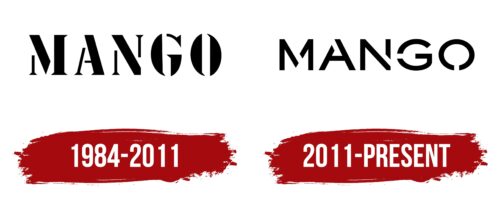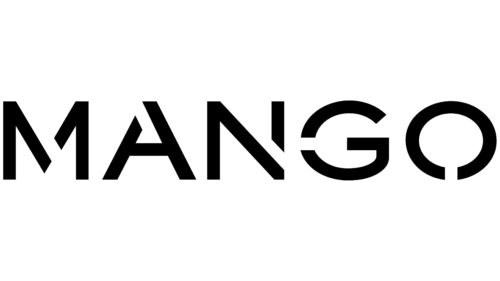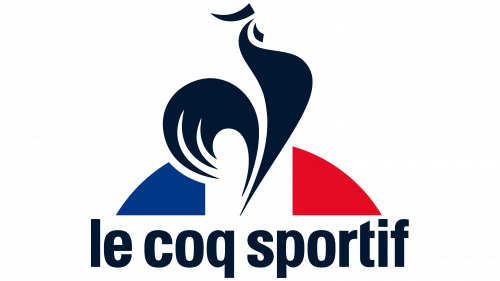The Mango logo is a commercial symbol with its unique characteristics and features. It is easily memorable and recognizable among others, highlighting its individuality, just like each product from this brand.
The brand’s emblem holds a wealth of valuable information. Its identity is designed for its audience and vast and diverse product range. Since its founding, the Spanish company has remained true to its goals and values. By offering designer items for children, women, and men, the brand has managed to resonate with every customer. This emotional connection is also present when modern buyers see the stylish logo. Memories of their favorite purchases and a desire to explore new collections come to mind.
The visual symbol itself looks impressive and stands out for its originality. Its monochrome palette enhances the brand’s status, while the clear and expressive presentation of the name creates a distinctive visual effect, evoking exclusively positive emotions and leaving a strong impression.
Mango: Brand overview
The history of Mango began in 1984 when brothers Isak and Nachman Andik opened their first store on Passeig de Gracia in Barcelona, Spain. Originally named after one of the brothers, the store specialized in women’s clothing. The fashionable yet affordable designs quickly gained popularity among local shoppers.
Building on this early success, the Andik brothers decided to expand. By 1985, they had opened four more stores in Barcelona. That same year, they rebranded the business under a new name. The name was chosen because it is easy to pronounce in many languages, reflecting their ambition for international growth.
In 1988, the company expanded beyond Barcelona by opening two stores in Valencia, beginning its national expansion across Spain. A significant milestone came in 1992 when the brand opened its first international stores in Portugal and France, officially launching its global presence. The mix of accessibility and style helped the business quickly gain popularity in new markets.
During the mid-1990s, the company continued its rapid growth across Europe, opening stores in several countries. At this time, the franchise network began developing, allowing the brand to enter new markets more quickly.
In 1995, the company became one of the first fashion brands to launch a website. Initially used for informational purposes, the website marked a crucial step toward embracing e-commerce.
2000, the business entered the Asian market, opening its first store in Singapore. Over the next few years, the company expanded throughout the region, including into China, Japan, and other countries.
2002, the brand reached another milestone by introducing H.E., its first menswear collection, later rebranded as Mango Man. This expansion allowed the company to attract a broader customer base.
The company took a significant step in online retail by launching its first e-commerce store in 2006, responding to the growing trend of online shopping.
In 2008, the brand introduced a new accessory line, which included jewelry, handbags, and shoes, offering customers a complete fashion experience.
In 2010, further expansion came with the launch of a line designed for girls aged three to twelve, followed by a collection catering to sportswear and lingerie needs in 2011.
Seeing a demand in the market for inclusive sizes, the company debuted its first plus-size collection in 2013. In 2014, it expanded its offerings to younger customers, launching a line that included clothing for boys and girls ages 3 to 14.
The company celebrated its 30th anniversary in 2015, solidifying its position as one of the world’s leading fashion brands. By this time, the business operated over 2,700 stores across 109 countries.
From 2016 to 2017, the company made significant investments in technology and logistics, opening one of Europe’s largest and most advanced logistics centers in Barcelona.
In 2018, a new collection featuring clothing made with more sustainable materials and practices was launched, reflecting the company’s growing focus on environmental responsibility.
During 2019 and 2020, the company further developed its online presence, investing in omnichannel sales and enhancing its website and mobile app to improve the customer experience.
In 2021–2022, the business continued to adapt to changing market conditions by strengthening its online platform and optimizing its physical store network. The brand also expanded its offerings with new product lines and collaborations.
By 2023, the company had established itself as a leading global fashion brand known for blending style, quality, and affordability. The business continues to evolve, driven by changing consumer demands and industry trends. The journey from its first store in Barcelona to becoming a prominent international fashion brand illustrates how clear vision, continuous innovation, and adaptability are key to success in the competitive fashion industry.
Meaning and History
What is Mango?
This Spanish fashion giant in the fast fashion industry skillfully combines Mediterranean style with international trends. The brand is known for its elegant, versatile clothing and accessories, attracting customers who value style but have a limited budget. The collections offer the opportunity to easily refresh wardrobes by combining classic elements with trendy new items. The clothing is characterized by clean lines, simplicity, and European sophistication, appealing to various age groups and styles. The brand has expanded its range beyond women’s clothing, adding men’s items, children’s products, and plus-size collections, making it a one-stop shop for many families.
1984 – 2011
The company’s first identity presentation sparked curiosity because its appearance differed significantly from competitors’ logos. The designers chose a classic color palette as if looking into the future. The combination of black and white on a single emblem symbolized the brand’s potential, ambitions, and future success. This tone allowed the logo to remain relevant, smoothly transitioning from one decade to the next.
The white background created the effect of a blank canvas, with large and noticeable letters rendered in an unconventional font placed directly in the center. This method of placing the key element was used in cases where it was necessary to draw attention to a new brand and introduce it to a wide audience. The company effectively made its statement with this visual mark, offering something unique to stylish and discerning customers.
One of the most successful decisions was using a font that instantly grabbed attention. Bold and expressive, it stood out because some letter elements appeared as independent visual objects. Dining typographic characters into parts added dynamism, creating a sense of movement. This solution perfectly emphasized the brand’s constant development, as it aimed for growth and wasn’t planning to stop at what had already been achieved.
2011 – today
The Mango logo, updated in 2011, continues to represent the brand concisely and stylishly, emphasizing its modern values. The main changes affected not only the logo’s essence but also its visual style. By keeping the black-and-white palette, the company maintained its association with reliability and stability, which is crucial for a brand focused on creating fashionable yet affordable clothing.
“Mango” is written in black capital letters with sharp, angular lines. This font highlights minimalism and modernity, making the logo easy to perceive and memorable. The emblem is designed in the FM Bolyar Sans Pro 600 font, giving it a unique character and graphic quality. The letters are strict but have elements of elegance, reflecting the philosophy of style and sophistication without unnecessary details.
The black color of the letters symbolizes success and confidence. The simplicity and clarity of black on a white background create a sense of purity and harmony. This decision emphasizes the brand’s clothing’s versatility—it suits various occasions while always looking stylish.
Special attention should be given to the circular element in the visual mark, the final letter “O.” This letter is slightly unconventional: it represents an open circle. This adds originality and dynamism to the emblem, highlighting the brand’s desire for growth and forward movement while maintaining its identity.
The update was tied to the expansion of the product range and the brand’s elevated status on the global stage. The company decided to preserve the recognizable image but gave it a modern twist, making the logo more relevant to new markets and audiences.






